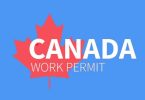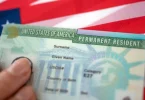So, you’ve decided to travel to Canada, right? Great choice! Whether you’re drawn by the stunning landscapes, vibrant cities, or diverse culture, Canada has something for everyone. But what’s the best way to make your dream a reality? That’s where Direct Entry comes in. In this guide, we’ll walk you through everything you need to know about traveling to Canada with Direct Entry, from eligibility to arrival.
Understanding Direct Entry
Definition of Direct Entry
Direct Entry is a streamlined process designed to help qualified individuals immigrate to Canada more efficiently. Unlike traditional immigration routes that can be lengthy and complicated, Direct Entry offers a faster, more straightforward path to permanent residency.
Benefits of Direct Entry
The benefits of Direct Entry are numerous. Not only does it significantly cut down on processing times, but it also allows you to manage and monitor your application online. Plus, with multiple programs under the Direct Entry umbrella, there are various routes to suit different backgrounds and skills.
Eligibility Criteria for Direct Entry
Age Requirements
While there’s no universal age limit for Direct Entry, different programs might have their own age preferences. Generally, candidates between 18 and 35 years old receive the highest points.
Language Proficiency
You’ll need to prove your proficiency in English or French. This is typically done through standardized tests such as IELTS or TEF. High scores can significantly boost your application.
Educational Qualifications
Having a good educational background is essential. Degrees, diplomas, and certificates from recognized institutions can earn you valuable points in your application.
Work Experience
Relevant work experience is another critical factor. Skilled work experience in occupations that are in demand can enhance your eligibility and improve your overall score.
Types of Direct Entry Programs
Express Entry System
The Express Entry system is one of the most popular routes. It manages applications for three economic immigration programs: the Federal Skilled Worker Program, the Federal Skilled Trades Program, and the Canadian Experience Class.
Provincial Nominee Programs (PNPs)
Each Canadian province and territory (except Quebec) has its own PNP that allows them to nominate candidates who wish to settle in a particular province.
Atlantic Immigration Pilot Program (AIPP)
The AIPP is aimed at addressing labor shortages in the Atlantic provinces of Nova Scotia, New Brunswick, Prince Edward Island, and Newfoundland and Labrador.
Rural and Northern Immigration Pilot (RNIP)
The RNIP helps smaller communities attract and retain skilled workers by providing a pathway to permanent residence.
Express Entry System
Overview of Express Entry
Express Entry is a points-based system where candidates are ranked based on various factors. The highest-ranked candidates are invited to apply for permanent residence.
How to Create an Express Entry Profile
Creating an Express Entry profile is straightforward. You’ll need to provide information about your skills, work experience, language ability, education, and other details.
Comprehensive Ranking System (CRS) Points
The CRS assigns points for factors like age, education, language proficiency, and work experience. Understanding how to maximize your CRS score is crucial for success.
Provincial Nominee Programs (PNPs)
What are PNPs?
PNPs are designed to meet the specific needs of each province and territory, allowing them to nominate individuals who wish to live and work in their region.
Popular PNPs
Some of the popular PNPs include the Ontario Immigrant Nominee Program (OINP), British Columbia Provincial Nominee Program (BC PNP), and Alberta Immigrant Nominee Program (AINP).
Application Process for PNPs
The application process generally involves submitting an Expression of Interest (EOI) and, if invited, applying for provincial nomination.
Atlantic Immigration Pilot Program (AIPP)
Overview of AIPP
The AIPP is a partnership between the Canadian government and the Atlantic provinces to attract skilled workers to the region.
Participating Provinces
The participating provinces include Nova Scotia, New Brunswick, Prince Edward Island, and Newfoundland and Labrador.
Application Process
To apply, you’ll need a job offer from an employer in one of the Atlantic provinces. Once you have the offer, you can apply for permanent residence.
Rural and Northern Immigration Pilot (RNIP)
What is RNIP?
The RNIP is designed to help smaller communities benefit from economic immigration by providing a pathway for skilled workers to gain permanent residence.
Eligible Communities
The pilot includes communities in Ontario, Manitoba, Saskatchewan, Alberta, and British Columbia.
Application Steps
You must have a job offer from an employer in one of the participating communities. After securing the offer, you can proceed with your application.
Document Preparation for Direct Entry
Required Documents
Key documents include your passport, language test results, educational credentials, and proof of work experience.
How to Gather and Prepare Documents
Start by obtaining certified copies of your documents. Make sure all translations are accurate and that you have clear, legible copies.
Medical and Security Clearances
Importance of Medical Exams
A medical exam is mandatory to ensure you don’t have any health conditions that could pose a risk to public health or safety.
Security Clearance Procedures
You’ll need to provide police certificates from every country where you have lived for six months or more since the age of 18.
Submitting Your Application
Step-by-Step Submission Process
Follow the specific instructions for your chosen program. Typically, this involves submitting an online application and paying the necessary fees.
Common Mistakes to Avoid
Double-check all your information before submitting. Common mistakes include incomplete forms, incorrect fees, and missing documents.
After Submission
What to Expect After Submitting
After submitting your application, you’ll receive an acknowledgment of receipt. The processing time can vary depending on the program and your specific circumstances.
Waiting Period and Follow-Up
During the waiting period, ensure that you can be easily reached by immigration authorities. Respond promptly to any requests for additional information.
Arrival in Canada
Pre-Arrival Checklist
Before you travel, make sure you have your visa, confirmation of permanent residence, and all necessary documents.
Settling in Canada
Upon arrival, you’ll go through customs and immigration. Afterward, you can start settling in, finding accommodation, and integrating into your new community.
Tips for a Successful Direct Entry Application
Expert Advice
Consider seeking help from immigration consultants or lawyers to guide you through the process and ensure all details are covered.
Common Pitfalls and How to Avoid Them
Avoid pitfalls like missing deadlines, providing inaccurate information, or neglecting to prepare thoroughly for language tests.
Conclusion
Embarking on your journey to Canada via Direct Entry is an exciting step towards a new future. By understanding the process, meeting eligibility criteria, and preparing thoroughly, you can make your dream of living in Canada a reality. So, what are you waiting for? Start your application today and embrace the opportunities that await you in the Great White North.





